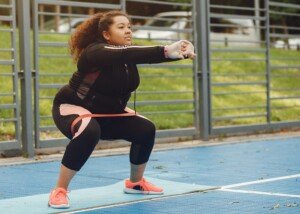
Maybe you should start logging in those running miles to prevent a need in older age for a total knee replacement surgery.
The myth is that typical running — and I don’t mean the degree of running that competitive runners do — grinds down the cartilage between the upper and lower leg bones where they meet in the knee.
But think of how many people you know who’ve had to have knee replacement surgery — be they older or middle age. How many were runners?
Think of the people who haven’t had total knee replacement surgery but were told they’ll eventually need it. Again, how many were runners?
“Running” Defined
I don’t mean competitively or long distance, but someone who simply jogs or runs for cardiovascular and general fitness.
Study Suggests Knee Replacement Can Be Prevented with Running
A study out of Brigham Young University shows that inflammatory chemicals in the knee joint go down after running.
The paper says that the idea of long distance running harming the knees might be more mythical than factual.
Two inflammation markers, GM-CSF and IL-15, were extracted from the synovial fluid of knees in the healthy study participants who were women and men 18 to 35 years old.
These markers were measured before and after the participants went running for 30 minutes.
After the running, the inflammatory markers were lower in concentration. When these chemicals were extracted prior to and after a non-running-related activity, their levels stayed about the same.
Exercise leads to an anti-inflammatory environment, says the paper. This can benefit long-term joint health.
When a person needs knee replacement surgery, it’s because too much of the cartilage between the upper and lower leg bones has worn away over the years.
Pain results due to bone-on-bone contact. This is called osteoarthritis.
The study authors explain that distance runners don’t seem to be any more likely to develop osteoarthritis than any other person.
This is yet another study that finds what I’ve always known since high school:
That jogging strengthens the knee joints and goes a long way at preventing the need for any joint replacement operations.

Freepik.com ijeab
You may still be struggling to understand this as you picture a person’s knees jarring and absorbing large amounts of forces per square inch as their feet slam down on pavement.
But the human body was designed for lengthy stints of running. Think of how your very ancient ancestors caught their food and escaped from danger.
Of course, it’s best to run on soft, continuously changing surfaces such as grass and earth, rather than asphalt.
Though the study focused on people 18 to 35, don’t let this discourage you from running if you’re older.
Total knee replacement surgery is no picnic, is invasive and carries risks, and recovery takes several months — my father had both knees replaced, so I definitely know!
Taking up Running for the First Time: Tips

Shutterstock/Den4is
Feel free to mix short segments of jogging with longer segments of walking.
Over time, increase the length of time jogging and shorten the length of time walking.
If you use a treadmill, do NOT hold on. This will warp natural gait patterns and can lead to a repetitive stress injury as well as a false feeling of accomplishment.
If you feel a need to hold on, this means you’re going TOO FAST. Reduce the speed.
Wear supportive footwear.
Don’t get ahead of yourself. Start out with slow jogging and supplement with strength training for the legs.
If you experience knee pain, stop. If it keeps recurring, see a doctor.


























